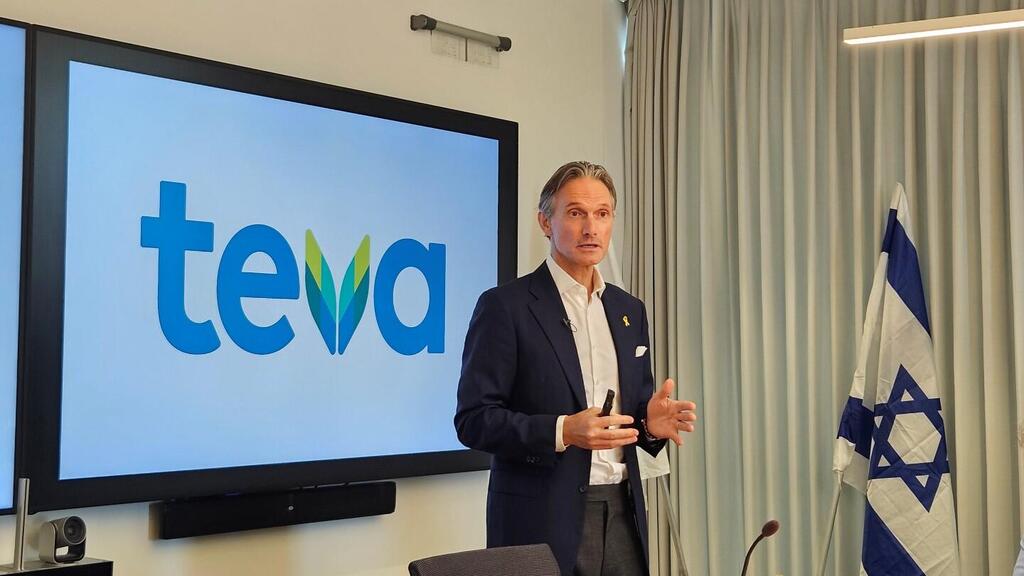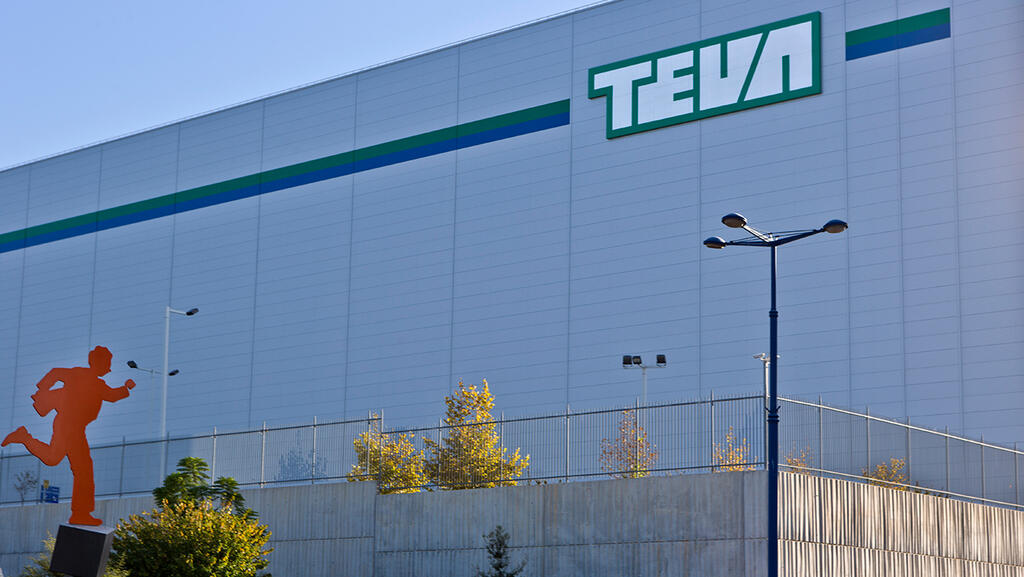Teva Pharmaceutical Industries offered an explanation for the impressive 10% surge in its stock over the past week—but the news came with a steep cost. The Israeli pharmaceutical giant reassured investors with a pledge to improve profitability after a slump earlier this year following disappointing earnings guidance. On Wednesday, Teva issued an improved and optimistic forecast, but it’s the company’s employees who will bear the brunt.
Almost as an afterthought, tucked into slide 15 of its investor presentation—as if hoping no one would notice—Teva revealed plans to lay off 8% of its global workforce over the next 18 months. With 36,167 employees worldwide, the move would mean nearly 3,000 job cuts.
Teva currently employs 3,400 people in Israel, which could translate into around 300 layoffs if cuts are made proportionally. The company framed the job reductions as part of CEO Richard Francis’s strategic plan to accelerate Teva’s shift to growth. The cuts will primarily affect procurement and logistics departments, where the company aims to streamline operations. Meanwhile, development departments are set to receive additional investment, reflecting Francis’ vision of transforming Teva into a biopharmaceutical firm focused on innovative medicines.
2 View gallery


Richard Francis, president and CEO of Teva, at the press conference
(Photo: Teva spokesperson)
Officially, the restructuring plan is expected to save the company $700 million by 2027, though CFO Eli Kalif indicated that implementation will be faster.
In an attempt to calm tensions, Teva emphasized Wednesday: “We will implement organizational changes to our global structure, which will include streamlining operations, eliminating redundancies and reallocating budget toward our new growth engines. It’s important to note that resources will also be redirected and invested in other areas, including R&D and commercial and strategic processes, such as the global innovation initiative to be managed from Israel.”
Following its aggressive cost-cutting in 2018, when Teva laid off a quarter of its global workforce and drastically downsized operations in Israel—including selling the Kiryat Shmona plant and shuttering facilities in Jerusalem—the company had enjoyed relative labor stability. Today, its Israeli workforce is more focused on development.
Teva currently operates five sites in Israel: its headquarters in Kiryat Atidim, a logistics center in Shoham, the TAPI active pharmaceutical ingredient plant in Neot Hovav (now up for sale), and development and production centers in Netanya and Kfar Saba.
“We face global competition and are working to become a biopharma company, not a generics firm. That requires different capabilities, responsiveness and profitability,” Kalif told Calcalist, adding that the move was no surprise. “This plan has been in the works for some time. Back in 2022, when Francis took over from Kare Schultz, we set a goal of 30% operating profit by 2027. Now it’s time to execute.”
Teva employees were understandably dismayed, even though the cuts are expected to roll out gradually. Investors, however, welcomed the move, with Teva’s stock jumping 7% on Wall Street Wednesday, pushing the company’s market value past $20 billion.
Investor concerns weren’t only tied to long-term targets, but also to a more immediate issue recently revealed by Calcalist: an anticipated sharp price drop for Revlimid, a key generic cancer drug. Over the past two years, Revlimid has become one of Teva’s strongest generics, generating over $1 billion in sales and $700 million in profit in 2024. A market-sharing agreement with other generic manufacturers has kept new entrants at bay—but that deal ends in 2026, opening the door to fierce competition, steep price declines, and shrinking revenue.
While Teva had previously downplayed the risk, Kalif acknowledged Wednesday that the layoffs are partially intended to offset that expected loss. Still, Teva emphasized that, despite the drop in Revlimid profits, EBITDA (earnings before interest, taxes, depreciation and amortisation) is forecast to rise in 2026 compared to 2025.
It remains unclear whether this will be the last round of layoffs. Asked about the possibility, Francis replied: “This is a journey, not a destination. We must constantly evaluate how Teva allocates and spends money to accelerate growth. This is just the first big step, but there will be more. We must carefully assess our spending. For instance, we currently operate 35 manufacturing sites globally—we aim to reduce that number to fewer than 30 by 2027. The goal is a tighter manufacturing organization.”
Regarding global supply chain risks, Teva downplayed concerns over new tariffs, noting that most of its U.S.-sold drugs are made domestically at one of its eight U.S. manufacturing sites. That includes Austedo, its flagship drug, expected to generate $2.5 billion in revenue by 2027. “The newly imposed tariffs on China have no effect on us,” Kalif said, “but we recognize the dynamic situation and continue to monitor it, adjusting our supply chain as needed.”
Get the Ynetnews app on your smartphone: Google Play: https://bit.ly/4eJ37pE | Apple App Store: https://bit.ly/3ZL7iNv
In Q1 2025, Teva posted stronger-than-expected earnings, although revenue slightly missed projections. Sales came in at $3.9 billion—$100 million below expectations—representing 5% year-over-year growth. The company reported earnings of 52 cents per share, above the expected 48 cents. Austedo sales rose 39% to $411 million, prompting Teva to raise its full-year forecast for the drug to $1.95–2.05 billion. Ajovy, its branded migraine treatment, grew 26% in the quarter with $139 million in revenue.
Generic products brought in $2.3 billion after a modest 3% rise. This category includes legacy drugs like Copaxone, which continues to decline, as well as newer, high-margin biosimilars—more advanced generics with premium pricing potential.
Francis laid out his continued growth strategy: Austedo remains the main growth engine, while new branded schizophrenia treatments Uzedy and Olanzapine are poised for expansion. The generics division is expected to remain stable, shrinking in relative importance over time.
Teva is also in advanced clinical trials, alongside pharmaceutical giant Sanofi, for Duvakitug, a drug for Crohn’s disease and ulcerative colitis. If successful, it could become the next Copaxone.
Boosted by Austedo’s momentum, Teva raised its annual revenue forecast by $200 million to $16.8–$17.2 billion and lifted its operating profit projection by $200 million to $4.3–$4.6 billion. These conservative estimates exclude potential payments from Sanofi tied to the success of the Duvakitug trials.
Under Francis, Teva has made notable progress in shifting away from low-margin generics toward higher-margin branded drugs. Still, it remains burdened by legacy products that inflate operations without generating profit—and by a $15 billion debt load as of Q1 2025.
As part of its long-term strategy, Teva is also working to divest its underperforming active pharmaceutical ingredient (API) manufacturing division, which generates about $500 million annually but lacks growth. Though a quicker sale was expected, the company said the process is in advanced stages.


